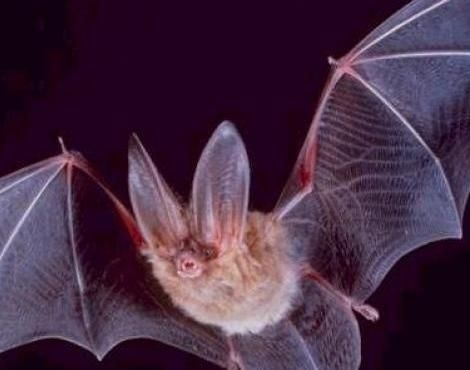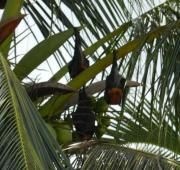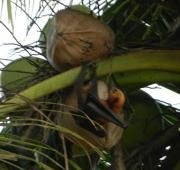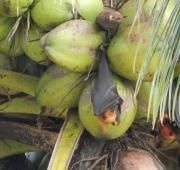
Bats are found all around the world and there are hundreds of different species of bat, living in caves and forests, particularly in the Southern Hemisphere. The bumblebee bat found in the jungles of Thailand, is the smallestmammal in the world and weighs less than a penny!
Bats hunt at night using their exceptional sight to pick out their prey, generallyinsects, frogs and small rodents. The size of bat varies with the species, but some bats can have a wingspan of over 2 meters, like the Indonesian giant flyingfox! Smaller bat species can be as little as only 2 cm.
The Niah Caves in the Malaysian state of Sarawak, on the tropical island of Borneo, is particularly famous for the sightings of thousands of bats. Oddly enough the enormous quantities of the bat's dung (known as guano), is one of the things that draws so many people towards bats!
Some species of bat are known to fly at extreme heights, sometimes up to 2 miles above the ground! The bats senses are so fine tuned that it is thought that some bats can hear footsteps 6 miles away.
Bats have a slight sixth sense known as echolocation. This means that the bat creates a series of supersonic sounds, which the bat then uses to locate prey by the sounds that are reflected back to them.
Unlike most species of animal, bats are found in any environment around the world excluding the polar regions. Despite what myths you may have heard, only three species of bat feed on animal blood and they all live in the deep jungles of South America, not Transylvania.



Bat Facts
| Kingdom: | Animalia |
| Phylum: | Chordata |
| Class: | Mammalia |
| Order: | Chiroptera |
| Family: | Microchiroptera |
| Genus: | Emballonuridae |
| Scientific Name: | Chiroptera |
| Type: | Mammal |
| Diet: | Omnivore |
| Size (L): | 3cm - 180cm (1.2in - 71in) |
| Weight: | 2g - 1,000g (0.07oz - 35oz) |
| Top Speed: | 40km/h (25mph) |
| Life Span: | 10 - 30 years |
| Lifestyle: | Pack |
| Conservation Status: | Least Concern |
| Colour: | Brown, Black, Grey |
| Skin Type: | Fur |
| Favourite Food: | Mice |
| Habitat: | Woodland and caves |
| Average Litter Size: | 1 |
| Main Prey: | Mice, Frogs, Fruit |
| Predators: | Owls, Eagles, Snakes |
| Distinctive Features: | Large ears detect prey using echolocation and have strong, flexible wings |



